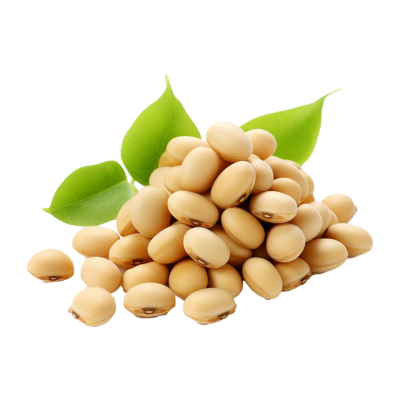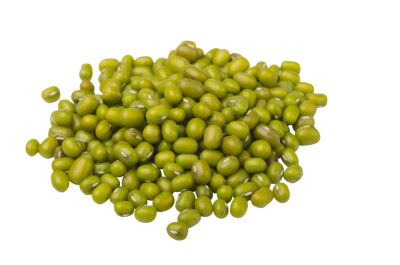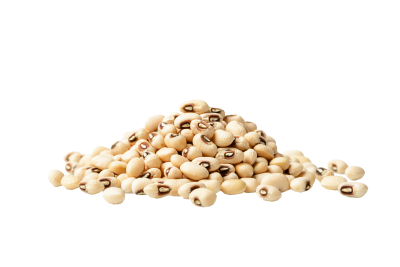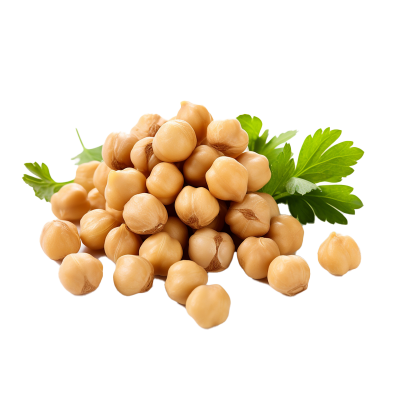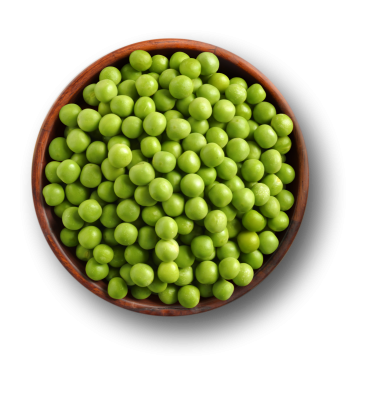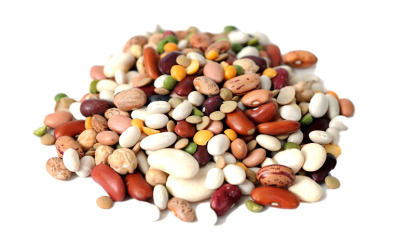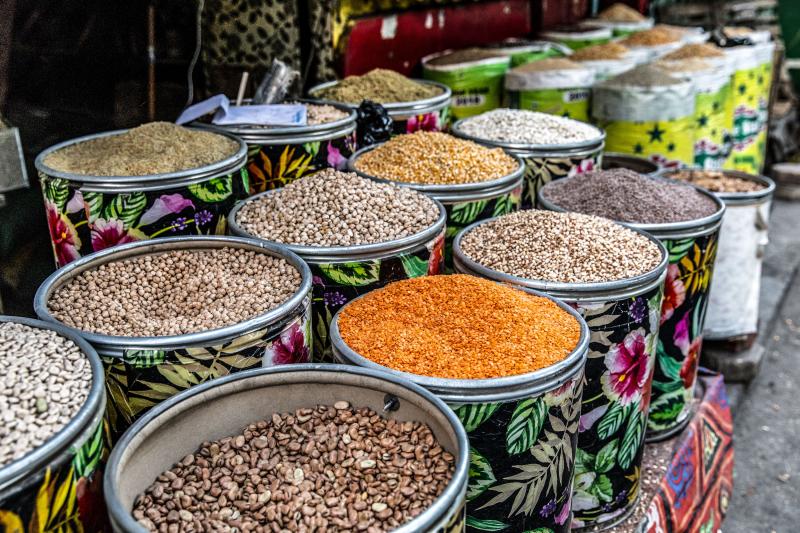Why Pulses Are the Future of Sustainable Agriculture in East Africa
Sustainability in agriculture is becoming an increasingly important issue worldwide. As global populations grow, climate change intensifies, and resources become scarcer, there is a critical need for farming practices that are both environmentally friendly and economically viable. Pulses—such as beans, lentils, chickpeas, and peas—are rapidly gaining recognition as a sustainable agricultural solution, particularly in East Africa. This blog explores why pulses are poised to play a central role in the future of sustainable agriculture in the region.
Pulses: A Crop with Multiple Benefits
Pulses are often referred to as "superfoods" due to their nutritional value, but their environmental and economic benefits make them an ideal crop for sustainable farming systems. They are rich in protein, fiber, and essential vitamins, making them a key component of food security. However, their benefits extend far beyond nutrition. Pulses are also uniquely positioned to address some of the most pressing challenges in East African agriculture, including soil degradation, water scarcity, and climate variability.
Enhancing Soil Health and Fertility
One of the primary advantages of growing pulses is their ability to fix nitrogen in the soil. Pulses are legumes, meaning they have a symbiotic relationship with nitrogen-fixing bacteria in the soil. These bacteria convert atmospheric nitrogen into a form that plants can use, thus enriching the soil without the need for synthetic fertilizers. This natural process significantly improves soil fertility, reducing the need for costly and potentially harmful chemical fertilizers.
In East Africa, where soil fertility is often a challenge due to over-farming, pulses offer a sustainable solution. By integrating pulses into crop rotations, farmers can restore soil health, reduce the risk of soil erosion, and increase the long-term productivity of their land. This makes pulses an ideal crop for smallholder farmers who often face the challenge of maintaining soil fertility with limited resources.
Water Efficiency: A Key to Sustainable Agriculture
Water scarcity is one of the most significant challenges facing agriculture in East Africa. Many parts of the region are prone to droughts, and rainfall patterns are becoming increasingly erratic due to climate change. Pulses are known for their water-use efficiency, requiring significantly less water than many other crops, including cereals like maize and rice.
For smallholder farmers in East Africa, pulses offer an opportunity to grow a high-value crop while using fewer water resources. Because pulses have deep root systems, they are better able to access water deep in the soil, making them more drought-resistant than other crops. This resilience to dry conditions makes pulses a sustainable crop choice in regions where water availability is uncertain, contributing to greater food security and stability for farmers.
Climate Resilience and Adaptability
As East Africa faces increasingly unpredictable weather patterns due to climate change, the ability of pulses to withstand diverse environmental conditions makes them a valuable asset in the region’s agricultural toolkit. Pulses are well-suited to the region's diverse climates, thriving in both dryland areas and regions with moderate rainfall. Additionally, pulses are more tolerant of temperature fluctuations and can be grown in areas with varying soil types.
This adaptability makes pulses an ideal crop for regions that are vulnerable to the impacts of climate change. As the climate continues to shift, pulses can be a buffer against unpredictable weather, providing farmers with a reliable income source even in the face of adverse conditions. By diversifying crop production with pulses, farmers can reduce their dependence on a single crop, mitigating the risks posed by climate variability.
Promoting Biodiversity and Crop Rotation
In many East African farming systems, monocropping—the practice of growing a single crop year after year—has led to soil depletion, pest infestations, and the loss of biodiversity. Pulses, on the other hand, are an excellent tool for crop rotation systems. By alternating pulses with other crops such as maize or vegetables, farmers can break pest cycles, reduce the build-up of disease, and improve overall soil health.
Crop rotation with pulses also helps restore biodiversity in agricultural landscapes. By growing a variety of crops, farmers contribute to a more resilient and ecologically balanced farming system. Pulses enrich the local ecosystem by attracting beneficial insects, improving soil structure, and supporting a diverse range of organisms in the soil, which in turn helps reduce the need for chemical pesticides and fertilizers.
A Sustainable Source of Livelihood for Farmers
Sustainable agriculture is not only about the environment—it’s also about ensuring that farming remains a viable livelihood for the people who depend on it. Pulses offer smallholder farmers in East Africa a reliable and profitable crop with lower input costs, which is particularly valuable in a region where access to resources like credit, fertilizers, and irrigation can be limited.
Pulses also provide farmers with a diversified source of income. While pulses can be consumed locally, they are also in high demand on international markets, offering export opportunities that can significantly increase farmers’ incomes. With the growing global interest in plant-based proteins, pulses are poised to be a lucrative export commodity, benefiting both individual farmers and the broader East African economy.
Supporting Sustainable Livestock Farming
In East Africa, livestock farming plays a major role in rural economies. However, the traditional livestock farming system often faces challenges such as overgrazing, land degradation, and high feed costs. Pulses can play an important role in supporting sustainable livestock farming systems by providing high-quality, plant-based protein for animal feed.
Pulses such as cowpeas, for example, are an excellent source of protein and energy for livestock. Integrating pulses into livestock feed can help reduce reliance on expensive, water-intensive feed crops and ensure healthier, more productive animals. This contributes to a more sustainable and diversified farming system where both crop and livestock production are integrated.
The Way Forward for Pulses in East Africa
The future of sustainable agriculture in East Africa depends on the adoption of innovative, environmentally friendly farming practices, and pulses are perfectly positioned to lead the way. Governments, NGOs, and private-sector stakeholders must work together to promote the benefits of pulses, provide farmers with the tools and knowledge they need to grow them successfully, and improve access to markets for both domestic and international sales.
Moreover, research and development should focus on creating new pulse varieties that are more resilient to pests and diseases, as well as adapting farming techniques to increase yields and profitability for farmers. Financial institutions could play a key role by offering credit facilities and insurance products tailored to the needs of pulse farmers, encouraging them to adopt pulses as a core component of their agricultural practices.
Conclusion
Pulses are more than just a nutritious food source—they are the future of sustainable agriculture in East Africa. With their ability to improve soil fertility, conserve water, withstand the effects of climate change, and enhance biodiversity, pulses are uniquely suited to the region’s agricultural needs. By embracing pulses as a cornerstone of sustainable farming practices, East Africa can improve food security, enhance livelihoods, and build a more resilient agricultural sector that benefits farmers, the environment, and the economy as a whole.
As East Africa continues to confront the challenges of climate change and growing populations, the adoption of pulses as a key component of sustainable agriculture will be instrumental in ensuring that the region’s farming systems remain productive, profitable, and sustainable for generations to come.


